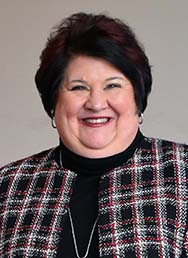Column: Women Should Not Be Defined as Risk-Adverse
By Kelly L. Wilkinson
Dean, YSU Williamson College of Business Adminstration
YOUNGSTOWN, Ohio – During the recent YSU Thomas Colloquium on Free Enterprise, Allyson Felix discussed her business venture and the problems she faced obtaining capital to start her company – Saysh, a maker of sneakers for women. It was an important story to hear.
As she discussed her challenges and opportunities, along with her commitment to social impact, it provided a time to reflect on the environment of investing in and with women.
It seems that the venture capital environment is not quite embracing women entrepreneurs.

Data provided in 2022 by PitchBook, a venture capital, private equity, and mergers and acquisitions database, found women garnered 2% of the capital invested in the United States. The percentage improved to 16.5% if women had a male partner.
Although these numbers are low, they don’t define the trend. In early 2023, the data were trending upward for both female-founded and female/male-founded companies.
Why are women not trusted with ideas and money?
Anecdotally, experts in business and other areas espoused women are more risk adverse than men – therefore explaining the gender pay gaps along with the thought that with risk comes gain.
This is not necessarily the case. In 2022, a research publication by Antonio Filippin found that belief of the existence of gender differences in risk is “stronger than the evidence supporting them.” In fact, Filippin stated that the difference in risk attitudes is smaller than previously thought.
So, how does this impact women and risky decision-making?
In 2020, social science research by Luisa Alemany, Mariarosa Scarlata and Andrew Zacharakis found when just looking at quantitative variables, men tend to make riskier decisions than women.
But, when adding an element called “social risk,” women tend to take risks when this variable is addressed, they found.
When decisions are made on elements such as people, addressing a social problem or trying to find balance among conflicting interests, women look beyond the quantitative constructs and to the people and the environment.
In other words, women tend to make riskier decisions when there are important human or social consequences along with financial ones.
Economist Ann Crittenden, in research published in 2021, shared that African governments found when money was given to help families develop entrepreneurial family businesses so they could provide for their basic needs, the money was used for that purpose if given to the maternal leader of the family, Mom.
Giving grants to Mom ensured the money was used responsibly to better the family. Government officials often found that giving grants to men for family use was never used for that purpose. Women proved to be more self-disciplined in their decisions to use the grants. Risks weren’t removed. They were just considered through a different lens.
A study by Barclays Wealth found women were more likely to make money in the market because of risk aversion resulting from self-discipline. Women seem to possess or hope to possess self-discipline when it comes to investing and taking risk. Women value risks that are slow steady returns tied closer to social issues.
The implications are businesses can no longer be judged purely by their financial performance; environmental, social and governance factors are part of the equation.
Financial performance is still important. But evaluating the environmental, social and governance factors tend to predict better long-term financial performances.
It is also important to realize that women as entrepreneurs and women as investors can’t be defined as just risk adverse; it is much more nuanced than that.
Research shows that women will take MORE risks than men when using both quantitative and social data.
When investment decisions are made by teams dominated by men, about ventures founded by women, opportunities for both positive social impact, along with financial success, may be missed.
The biggest risk of all may be the lack of women in the decision-making process about female-founded ventures. Let’s invest in women on both sides of the equation; as an entrepreneur and as the investor making investment decisions for others.
Copyright 2024 The Business Journal, Youngstown, Ohio.



